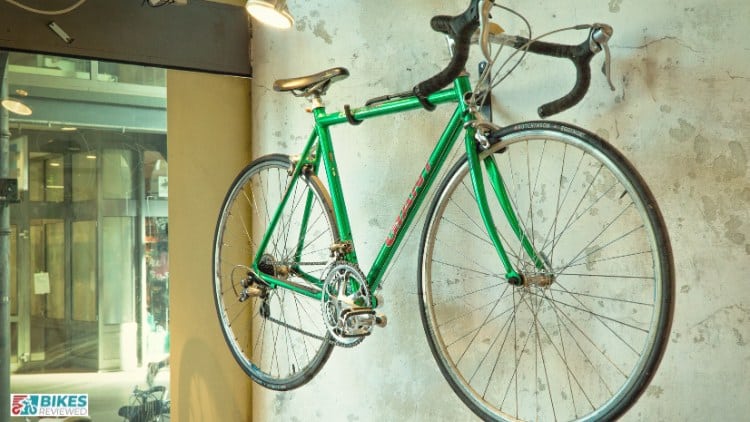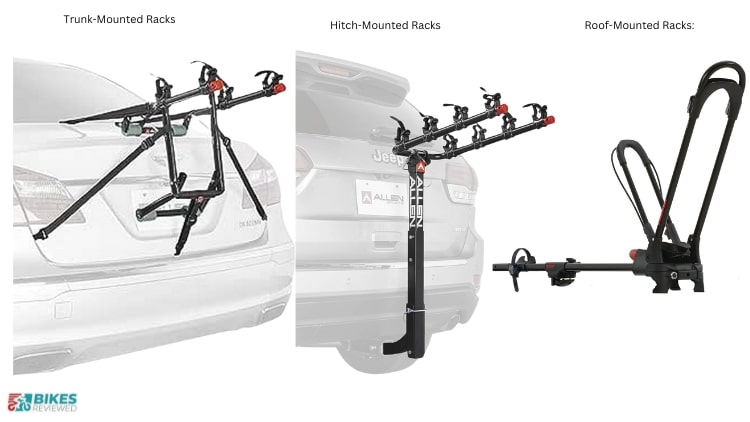Hanging bikes on a wall or a car is a smart solution for saving space and ensuring your bikes are stored securely. Whether you're short on garage space or need to transport your bikes safely, knowing how to hang them properly is essential.
In this guide, we'll walk you through the process of hanging bikes on a wall, discussing the equipment you'll need and the steps to follow for a secure setup. Additionally, we'll touch on how to hang bikes on a wall, providing tips for safe and efficient travel.
Before diving into the specifics of hanging bikes, let's talk about why it's important to store and transport them correctly. Proper storage helps protect your bikes from damage, whether it's scratches, dents, or other wear and tear that can occur when they're left leaning against walls or lying on the ground. Hanging bikes on a wall not only clears up floor space but also keeps them out of harm's way.
When it comes to transportation, securely mounting bikes on a car prevents them from shifting or falling during transit, reducing the risk of accidents and damage. Whether you're heading to the trails or embarking on a road trip, ensuring your bikes are properly secured is crucial for a smooth journey.

Tools Needed To Hang Bikes On a Wall or Car
- Bike rack options: There are various bike rack options available, including hooks, racks, and wall-mounted stands. Choose one that suits your space and the number of bikes you need to hang.
- Stud finder: A stud finder is essential for locating the wooden studs behind your wall. These studs provide the necessary support for mounting heavy objects like bike racks.
- Level: To ensure your bike rack is mounted straight and level, a level tool is necessary for achieving precision.
- Drill and screws: You'll need a power drill and screws to attach the bike rack securely to the wall. Make sure to use screws that are appropriate for the type of wall material you're working with.
How to Hang Bikes On a Wall?
Now, let's focus on hanging bikes on a wall. This method is ideal for homeowners who want to maximize their garage or storage space. Here's what you'll need and the steps to follow:
- Choose the appropriate location on the wall: Select a spot on the wall where you have enough space to hang your bikes without obstructing walkways or other items. Consider the height at which you'll hang the bikes to ensure they're easily accessible.
- Locate and mark studs: Use a stud finder to locate the wooden studs behind the wall. Mark the positions of the studs using a pencil or masking tape. It's essential to mount your bike rack directly onto the studs for maximum stability.
- Install bike rack/hooks securely: Using the appropriate screws and a power drill, attach the bike rack or hooks to the wall, making sure to align them with the marked stud positions. Be sure to follow the manufacturer's instructions for proper installation.
- Hang bikes vertically or horizontally: Depending on the design of your bike rack, you can hang your bikes either vertically or horizontally. Vertical storage is space-saving and works well for wall-mounted hooks or racks. Horizontal storage may require a larger wall space but allows for easier access to the bikes.
- Ensure proper spacing between bikes: When hanging multiple bikes, make sure there's enough space between them to prevent handlebars, pedals, or wheels from overlapping. This ensures that each bike is securely suspended and easily accessible.
By following these steps, you can effectively hang your bikes on a wall, maximizing storage space and keeping them organized and secure.
Tips for Safe and Effective Bike Hanging
When hanging your bike on a wall, it's important to position it correctly to ensure stability and safety.
Proper Bike Positioning for Wall Hanging
Start by finding a sturdy wall stud or using a quality wall mount specifically designed for bikes. Position the bike horizontally with the front wheel facing outward. This not only saves space but also makes it easier to mount and dismount the bike.
Regular Maintenance and Inspection of Bike Racks
To ensure your bike rack remains in optimal condition, regular maintenance and inspection are essential. Check for any signs of wear or damage, such as rust, loose bolts, or frayed straps. Clean the rack periodically to remove dirt and debris that can affect its performance. By staying proactive with maintenance, you can prolong the lifespan of your bike rack and ensure the safety of your bike.
Weight Capacity Considerations
Before hanging your bike on a wall, consider the weight capacity of the bike rack or wall mount. Overloading the rack can lead to instability and potential damage to both the bike and the wall. Refer to the manufacturer's guidelines to determine the maximum weight the rack can support and ensure your bike falls within that limit.
Security Measures to Prevent Theft
Protecting your bike from theft is paramount, especially when it's hanging on a wall in a public area or outdoor space. Invest in a quality bike lock and use it to secure the frame to the wall mount or rack. Additionally, consider installing security cameras or motion sensor lights to deter potential thieves. By taking proactive security measures, you can enjoy peace of mind knowing your bike is safe and secure.
When you're ready to hit the road with your bike, hanging it on your car is a convenient and efficient way to transport it. Here's how you can do it safely.
By following these tips, you can safely transport your bikes on a car, allowing you to explore new trails and destinations with ease.
Hanging bikes on a wall or a car is a practical solution for storage and transportation, offering convenience and space-saving benefits.
By using the right equipment and following the proper steps, you can securely hang your bikes on a wall and transport them by car without worry.
Types of Bike Racks for Cars

There are several types of bike racks available for cars, each with its own advantages and considerations:
- Roof-Mounted Racks: These roof mounted bike racks attach to the roof of your car and are ideal for vehicles with roof rails or crossbars. They offer a secure and stable way to transport your bike but may require additional lifting to load and unload.
- Hitch-Mounted Racks: Hitch-mounted racks are attached to the hitch receiver at the rear of your car. They are easy to install and can typically carry multiple bikes. However, they may obstruct access to the trunk or rear hatch of your vehicle.
- Trunk-Mounted Racks: Trunk-mounted racks attach to the rear of your car using straps and hooks. They are versatile and compatible with a wide range of vehicles but may not provide the same level of stability as roof-mounted or hitch-mounted racks.
Steps for Installing Bike Racks on a Car
Once you've chosen the appropriate type of bike rack for your car, follow these steps for installation:
- Choose the Suitable Type of Bike Rack: Consider your vehicle's specifications and your specific biking needs to select the right type of bike rack.
- Follow Manufacturer's Instructions for Installation: Read the manufacturer's instructions carefully and ensure you have all the necessary tools and equipment before starting the installation process.
- Securely Attach the Bike Rack to the Car: Follow the provided instructions to securely attach the bike rack to your car, whether it's on the roof, hitch, or trunk.
- Load and Secure Bikes Onto the Rack Properly: Carefully load your bike onto the rack according to the manufacturer's guidelines, making sure it is properly secured in place.
- Double-Check the Stability and Security of the Setup: Before hitting the road, double-check the stability and security of the bike rack and bikes to ensure everything is properly in place.
Proper Loading and Unloading Techniques for Car-Mounted Racks
When loading and unloading your bike from a car-mounted rack, it's important to use proper techniques to prevent damage to your bike and ensure safety:
- Lift the bike onto the rack carefully, avoiding any sudden movements or jerks.
- Secure the bike in place using the provided straps or tie-downs, making sure it is stable and not wobbly.
- When unloading the bike, reverse the process by carefully lifting it off the rack and setting it down gently on the ground.
Hanging bikes on a wall or on a car offers convenient solutions for storage and transportation, allowing you to enjoy your biking adventures with ease. By following safety guidelines and proper installation techniques, you can ensure the safety and security of your bike while maximizing space and convenience.
Whether you're hanging your bike at home or taking it on the road, proper maintenance and attention to detail are key to a successful biking experience. So, go ahead, hang your bike with confidence, and embark on your next biking adventure!
